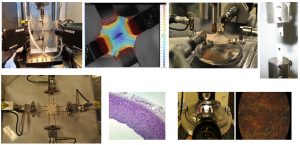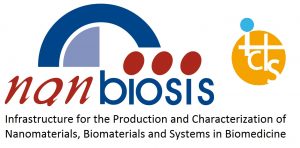The principal aim of this line is the experimental study of the mechanical and microstructural behaviour of materials focusing on biomaterials and biological tissue. The analysis of the composition, morphology, microstructure and macroscopic behaviour allow to develop advance constitutive law able to reproduce the main physical features of the materials and afterward will be used in the rest of research lines of the group. The principal experimental tests and analysis are uniaxial, biaxial, compressive, shear stress, indentation, inflation, tomography, histology, in order to capture phenomena such as elastic, viscoelastic, fatigue or softening behaviours. Histological and microstructural tests permit to extract important information to model and simulate the response of the tissue at microstructural or cellular level.

The main features:
- Uniaxial testing INSTRON machines
- Planar-biaxial testing INSTRON machine
- Planar-biaxial testing machine (hand-made machine for small samples)
- Nano BIONIX MTS
- Digital Volume Correlation (DVC) system for analysis of images
- Axial-torsional testing INSTRON machine
- Dynamic testing INSTRON machine
- Inflation test equipments (hand-made machines for normal and small size blood vessels)
- Vascular BioDynamic and Uniaxial Bose Test Instruments machines
- Atomic Force Microscopy JPK
- Confocal and Polarized light microscopies
- MicroCT Explore Locus SP
- Histological unit for characterization of biological tissues
These services are the unit 13 of NANBIOSIS, the Design and production of biomaterials, nanomaterials and devices to their preclinical validation Infraestucture, of CIBER-BBN and Jesus Usón Minimally Invasive Surgery Centre, which has been recognized by MINECO as Singular Scientific and Technological Infrastructure (ICTS). Web page U13. Tissue & Scaffold Characterization Unit – NANBIOSIS
